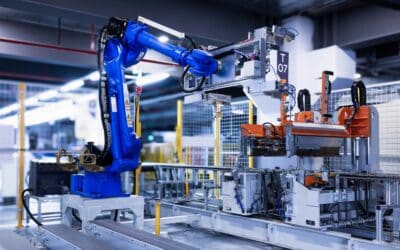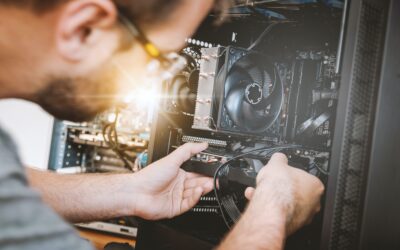Autonomous driving, smart homes, solar roads, robots in every service sector… these are all examples of automation, and we could continue this list forever. New inventions are integrated in our everyday lives so much that we barely notice them. We often forget that automation is not a new term, but that people have been trying to automate things for thousands of years.
Meaning of the term
Almost as old as the basic idea of automation, is the term itself. Automation is derived from the ancient Greek word automatos, meaning self-moving. The Greek goddess Automatia is associated with it as the “goddess of free-wheeling happiness and events occurring without human intervention.”
The three phases of automation
Over the last 2000 years, automation has gradually become more important, and the pursuit of efficiency and effectiveness has increased significantly. Up to the present, automation can be divided into three phases. These phases are characterized in each case by different historical events and differ thereby in their contents regarding automation:
- mechanization
- use of electricity, electrical engineering and electronics
- use of computer technology and information technology
The first phase: mechanization
The first and longest phase of automation is strongly characterized by mechanization. The first records dealing specifically with automation date back to ancient Egypt and ancient Greece.
The mathematician and engineer Heron of Alexandria, who probably lived in the first century AD, developed the first vending machine, which contained milk and wine. He also developed automatically opening temple doors, a prototype of the first steam engine, and a weapon that shoots arrows like a machine gun. None of his developments have been preserved but documents with construction plans.
The first industrial revolution changed traditional forms of work and is considered the greatest milestone of automation. It began in England around 1780. The invention of the steam engine was followed by the power loom and the railway. The economy grew enormously because of increased production in the textile industry.
The second phase: use of electricity, electrical engineering and electronics
The discovery and use of electricity, electrical engineering and electronics advanced the mechanization of industries. Allessandro Volta, André Marie Ampère, Werner von Siemens and many other discoverers and inventors shaped and revolutionized this time.
Milestones of the second phase include the first assembly line production for Henry Ford’s Model T in 1913 or the commissioning of the first industrial robot in 1961 named Unimate. It was responsible for removing and separating injection-moulded parts at General Motors. In the 1970s and 80s, automotive factories increasingly focused on automating monotonous work processes.
The third phase: use of computing and information technology
The personal computer initiated the last phase of automation so far. For the first time, automation is not only used for physical processes. The information age thrives on the collection and analysis of data, so-called Big Data. The Internet of Things is creating even more data, which is being used accordingly. Data mining is also becoming more and more relevant for companies worldwide in order to identify trends among customers at an early stage and to react to them.
The future of yesteryear
The question of the future has always been asked. Theories made in the past become interesting when they turn into the present. For example, from 1899 to 1910, Jean-Marc Côté and other artists produced postcards with their ideas of what the year 2000 might look like.



If you look at these pictures today, it becomes clear that it is very difficult to estimate the future correctly. In many aspects, however, people had made correct predictions. Especially concerning the further development of already existing inventions: for example, that the telephone will be equipped with a video function in the future. Or that the computing power of computers will improve. By way of comparison, at the time of the moon landing in 1969, the total computing power of NASA computers was as great as that of a modern smartphone.
Better and faster in the future
In the same way, we can also make statements about the future today. Basically, all imaginable areas will run faster or better in one form or another.
Today, we can already produce artificial skin with a 3D printer – and in the future, we will probably be able to print entire organs. Factories will be automated to the point where there will be few workers. Products can be made even faster and better, while people can continue their education to perform other important tasks. Artificial intelligence will play an increasingly important role in our daily lives.
How far this will all go and to what point we will automate, however, is hard to say. Stephen Hawkings commented “The rise of powerful AI will ve either the best or the worst thing ever to happen to humanity.”



